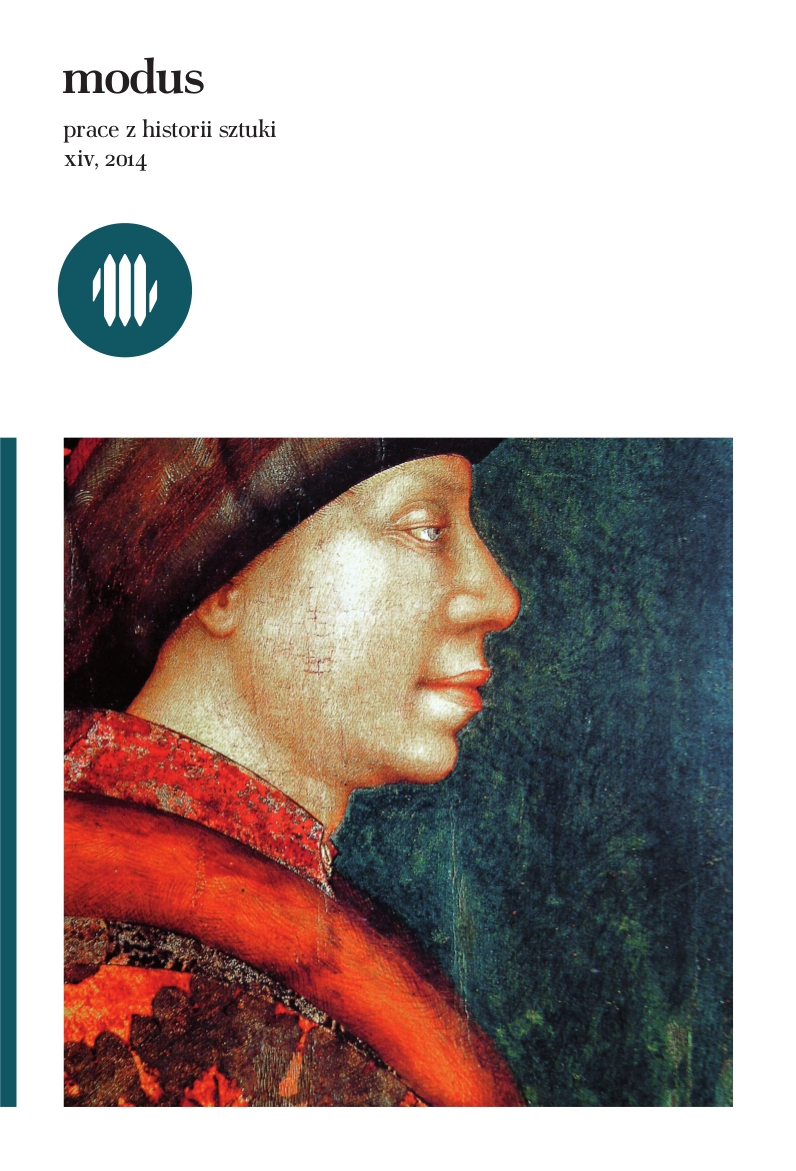Źródło rozproszeń dla przywiązanych do marności świata. Rozważania św. Bernarda z Clairvaux o sztuce sakralnej w interpretacji Armanda Rancego
Source of Distraction for Those Attached to the Vanities of the World. The Reflections on Sacred Art by St Bernard of Clairvaux as Interpreted by Armand Rance
Author(s): Piotr KrasnySubject(s): Fine Arts / Performing Arts, Cultural history, Visual Arts, Modern Age, 17th Century, Sociology of Art
Published by: Wydawnictwo Uniwersytetu Jagiellońskiego
Keywords: theory of art;St Bernard of Clairvaux; Armand Rance;
Summary/Abstract: 1666 Armand Jean Bouthillier de Rance (1626-1700) started a thoroughreform of the Cistercian abbey at La Trappe, aimed at restoring in the monastery thestrict rule of the Cistercian orders founding fathers: Sts Robert of Molesme, StephenHarding and Bernard of Clairvaux. A vision of monastic life based on their teachingswas presented by Rance in his De la saintete et des devoirs de la vie monastiąue (1683). Inthis treatise he recalled St Bernards reserved attitude towards art, as expounded in AnApology to William of St Thierry. In his radical reading of this text, Rance declared that,in order to stimulate their piety, monks did not need magnificent churches, splendidliturgical utensils or paintings representing sacred subjects. On the basis of a thoroughsurvey in the orders archival materials and an analysis of works of medieval Cistercianart, he demonstrated that in the centuries immediately following the foundation of theorder, Cistercians had faithfully adhered to the‘artistic doctrine’ of their founding father.Rance appealed to his comrades and other monks to liberate their liturgical practicesfrom the rich artistic setting, in order to be able to return the liturgy its proper spiritualcharacter. He was convinced that, while proclaiming such radical teachings, he remainedfaithful to Catholic orthodoxy which had established the practice of richly decoratedchurches and the cult of religious images for the use of ‘lay people who by their verycondition are imperfect and who are attached to vanities, whence their piety has to bestimulated by external things’. According to the holy tradition of the religious order,however, ‘all these things should be renounced, because not only may they distract themonks, but also instil things in their memory and hearts that should be rejected, inorder that they do not divert the attention of monks away from the hermitage [of themonastery] towards the world’.Yet, in the last quarter of the seventeenth century Rances radical puritanism appealedalso to the lay members of French intellectual elites who earlier had been under the influenceof Jansenist theology, which criticised excessive magnificence of sacred art. One ofthem was Andre Felibien, an outstanding art theorist and secretary of the Parisian AcademieRoyale de Peinture et de Sculpture. The architectural forms of the Fa Trappe abbeychurch, remodelled by Rance, were depicted by Felibien in his Description de YAbbaye dela Trappe (1677) as a consistent realisation of the Cistercian reformers concept of sacredart. Similar views were expressed by Frere Pacome (actually, Guillaume Dardenne) in hislaconic characteristic of the church and monastery at La Trappe, appended to the plansof the buildings offered by him to King Louis XIV in 1708. Rances artistic doctrine wasalso expounded in numerous pamphlets that propagated the Trappist reform among piousfemale members of the aristocracy; it was further disseminated by numerous pilgrims whofreąuently yisited La Trappe in order to learn there pure piety, liberated from ‘mundaneattachments’.Therefore, the radical interpretation of St Bernards thoughts on art included in De lasaintete et des devoirs de la vie monastiąue must have significantly influenced the developmentof a conviction - widespread among enłightened French elites in the eighteenth century - thatengendering piety by means of the works of art was associated with na'ive and superficialreligiosity, and did not go with the enłightened piety of the honnetes
Journal: Modus. Prace z historii sztuki
- Issue Year: 2014
- Issue No: 14
- Page Range: 123-138
- Page Count: 16
- Language: Polish

